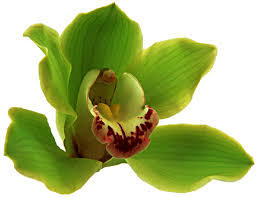#beauty magick
I apologize for my recent absence, I have been suffering a lot with seasonal depression but things are starting to get better now that the sun is coming back out. I hope everyone is doing well. Here is a love and lust bath ritual.
My Grimoire Pages|My Instagram|My Blog
Post link
Nearly endless in its beautiful varieties, the orchid flower almost seems to float on air as it invites one to contemplate its beauty. There are over 30,000 different varieties of wild orchids growing across this Earth, from the jungles of the equator to the arctic tundra and everywhere in-between! That’s not even counting over 200,000 hybridized varieties that florists have bred into existence. Orchids come in so many different varieties which love so many different growing conditions that, no matter where your garden, you’re sure to find a variety that’s right for you!

Energy ~ Feminine
Planet ~ Venus
Element ~ Water
Deities ~ Aphrodite, Qu Yan
Most varieties of orchids grow in jungle conditions, clinging to tree bark with thick white roots that are adept at drawing out moisture and nutrients. Because these varieties like to grow high in the tree tops, they’re ravenous for intense sunlight and thrive on 12-hour days — close to midsummer conditions in temperate regions. Many varieties of orchids are difficult to grow, to be sure; even professional growers can struggle to bring them to bloom! But even if your thumb isn’t quite green enough to get these fussy flowers to take to your garden, there are dozens of natural varieties and hundreds of hybridized species who are perfectly content to grow on a windowsill or under lights.
If you want to give your orchid the best possible chance of growing, do thorough research into which varieties are the best fit for your region, and purchase the most mature plant you can: younger plants are very difficult to please. If possible, buy it while it’s in bloom — that way you’ll immediately know what you’re striving for! While there are simply too many varieties of orchid to give general growing instructions for all of them, a look at the plant’s physical characteristics should give some clues. Plants with few or leathery leaves will likely prefer high-light environments, while plants with soft, limp leaves are probably light-sensitive and should not be placed in sunny south-facing windows.
In addition to one variety of orchid being our source for vanilla, the tuberous root of the plant is filled with a highly-nutritious and starchy substance, which is famous for a sweetish taste and somewhat unpleasant smell. This substance, known as bassorin, can be used to replace starch as a reserve material, or to make a drink known as salep — named after an Arabic word for orchid — which was sold in stalls from the Middle East to the streets of London until being supplanted by coffee. In addition to this drink’s purported rejuvenating properties (being lauded as a strengthening and demulcent or anti-inflammatory agent), Chinese medicine has recorded uses for orchids dating back over 3,000 years, noting varieties of the Dendrobium genus of orchids as one of nine ‘faery herbs’ said to be a gift from heaven. Different types of orchids are used in remedies for a huge variety of purposes, ranging from improving memory to treating rheumatism to even easing the symptoms of tuberculosis! Many cultures, including Greece and China, use the plant as an aphrodisiac, and orchid fragrance is also used in perfume and aromatherapy.
In terms of magick, old texts tell of witches using orchid tubers in their philters, the fresh tuber being given to promote true love whilst the withered one checks wrongful passions. Culpepper refers to orchids as being under “the dominion of Venus,” and tells us that, among other things, when “being bruised and applied to the place” they cure the King’s Evil. Orchids also correspond to beauty and elegance, expressing uniqueness, ecstasy, spiritual intuition, and Goddess energy. Some varieties of orchids are also used in creating visions, entering trance-states, and inducing psychic powers.

Confucius wrote many poems on the orchid’s beauty, and even based some of his teachings on this delicate flower! He wrote, “The orchids grow in the woods and they let out their fragrance even if there is no one around to appreciate it. Likewise, men of noble character will not let poverty deter their will to be guided by high principles and morals.” Whether you ascribe to the teachings of Confucius or not, the many multitudes of orchid varieties have a great deal to give us on all levels of our life: whether contemplating them philosophically, utilizing their medicinal properties, or simply savoring their beauty, orchids are a treasure to be cherished.
Different colors of orchid have different meanings, but generally speaking, in flower language it means “Love, Beauty, and Refinement.”
May the Tree of Life always shelter you!
A lot has been said about the value of inner beauty over outer beauty in our society, but let’s all be honest: it’s hard to go through life when you can’t look your reflection in the eye. Some of us, myself included, can’t just be content to have a good personality if the body housing it feels irreconcilable with said personality. So, here’s a spell for us!
On or behind your altar, set up a round mirror so you can see your reflection. Then, on your altar, arrange an opal and two green candles. Light the candles so that they warm and charge the opal, and by candlelight, stare deep into your reflection. In your mind’s eye, picture the transformation taking place, seeing every aspect becoming your ideal self.
Then, let the candles burn down and collect your opal. Carry it or wear it every day as you strive for beauty.

